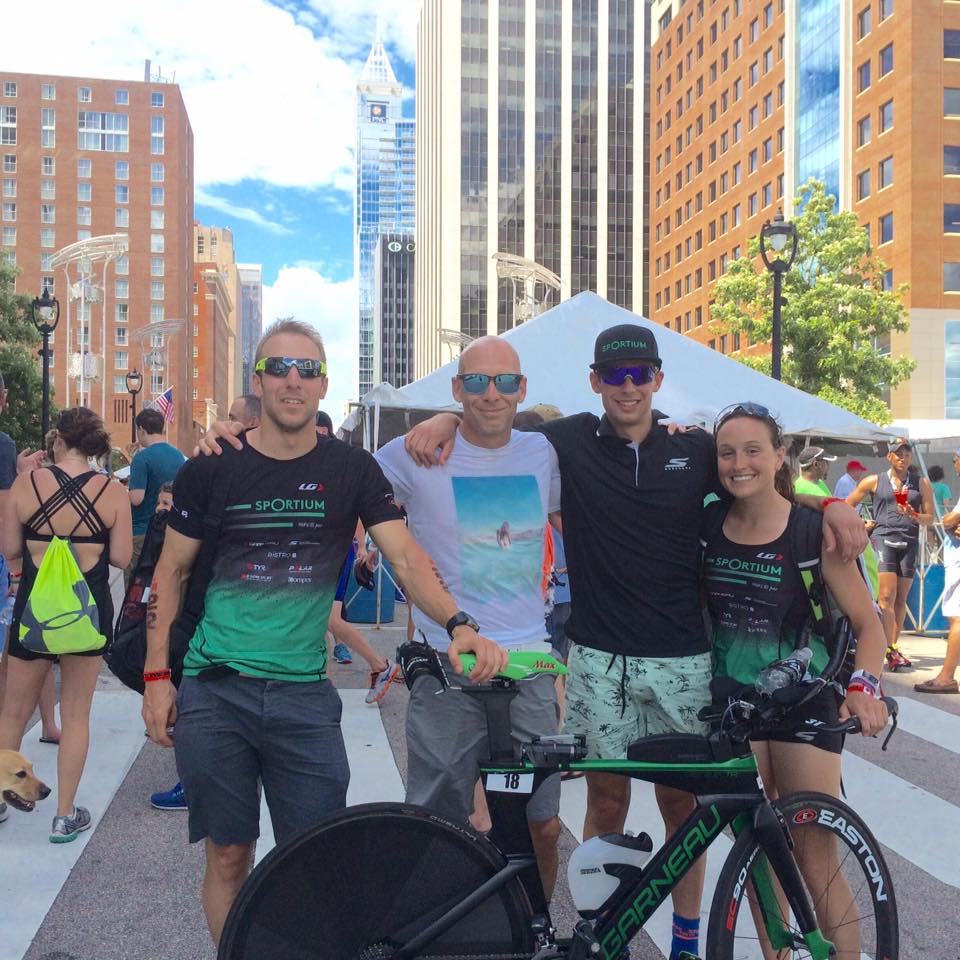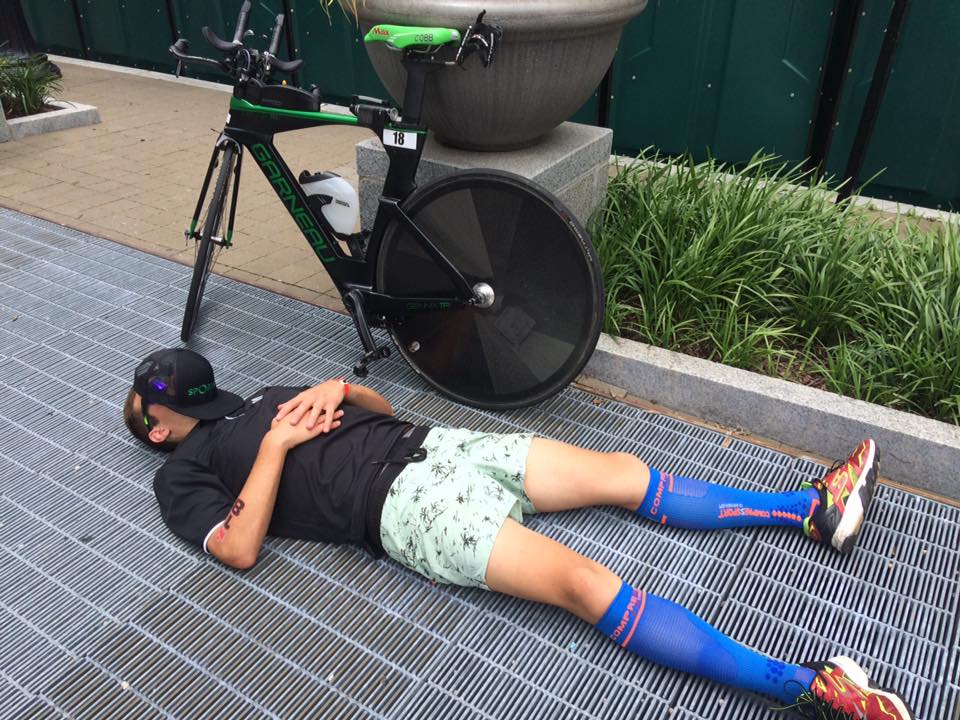Antoine J. Desroches: What I learned at Ironman 70.3 Raleigh

Last weekend, I raced Ironman 70.3 Raleigh and placed ninth. I was excited to earn a top 10 finish in a strong pro field, but as always I made some mistakes. Here I share with you the lessons I learned in hopes that they’ll help you at your next race.
“Training races” are just as important as A races
If you race multiple triathlons in one season, each of them can’t be an A race. You need to select a few races which are more important and the others that serve as preparation. For me, Ironman 70.3 Tremblant and ITU Long Distance World Championships are my two A races of the season. My other races are B or C races that I use to gain experience, put more emphasis on one sport, try a new tactic or practice my nutrition plan. For Raleigh, my coach and I decided to go over race pace on the bike to stay with the leaders and see whether I could sustain that pace and what wattage is required to do so. The results we took away are very important to my A race game plan.
Disc wheel is almost always the way to go
As I said in my last “what I learned” blog post, I don’t know much about bike technology and equipment. Therefore, whenever I’m unsure about what gear to use I like to consult my friend, uber-biker and bike geek Cody Beals. I asked whether I should use a disc wheel and he replied, “A disc plus a deep front wheel will always be fastest, except for very extreme courses you virtually never see in triathlon. So no need to overthink it!”.
Thanks to his knowledge, I decided to ride my disc wheel and I’m happy with my choice of equipment.
Don’t let your ego get in your way
Every time I am on the start line of a triathlon I have the confidence that I can lead the swim. Confidence is great but overconfidence is not and it can hinder you. At Raleigh, I was almost neck and neck with another athlete leading the swim. Neither of us seemed to want to let the other person lead, so instead of working together to gain a bigger lead on everyone else, we were fighting for the lead. At the first buoy I accelerated and took the lead with a small gap but used too much energy. A few guys passed me and I wasn’t able to follow them. I had to finish the swim in no man’s land, between the small lead pack and the huge main pack.
Make up time in transitions
If you’ve had a bad swim, it’s always possible to make up time in transitions. This is even more the case in long course racing. Here are some tips to have a fast T1.
- Remember where you racked your bike. You can lose a lot of time trying to find your bike when you drop it off, try to place it near a noticeable landmark you’ll remember when you enter transition.
- Practice taking off your wetsuit. Just as you train to swim, bike and run, you should train to remove your wetsuit or speedsuit as fast as possible. You can also practice putting on your helmet and sunglasses at the same time.
- Master your bike mount. Practice makes perfect. The more you practice the better you’ll get and the more time you’ll save. It’s that simple!
- Don’t lose time placing your feet in your bike shoes. A lot of people place their feet in their bike shoes and tighten their shoes as soon as they get on their bike. However, it’s much faster to gain speed by pedalling with your feet on top of your shoes and then, when you have reached enough speed, place your feet in your shoes.
Always follow your nutrition plan, no matter what. Since my tactic in Raleigh was to go all out on the bike no matter what, I concentrated too much on the watts I had to push. I forgot to consume my gels. Usually I eat four to five gels for the 90K but at 88K I realised that I had only eaten 2 gels. I paid the price on the run and hit the wall quickly. I dropped from third to sixth and even had to walk an aid station to get as much fuel as I possibly could. That error cost me a chance to earn prize money and finish in the top five.

